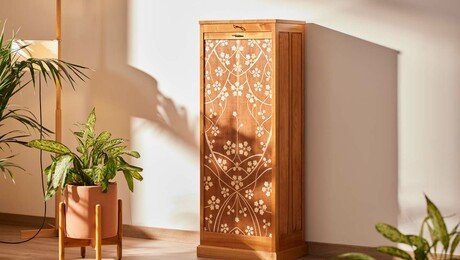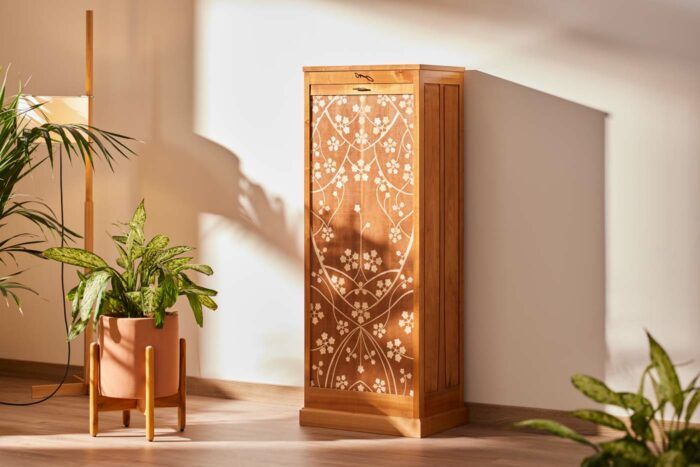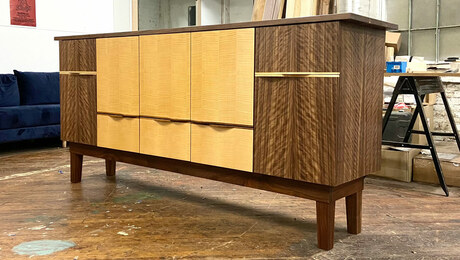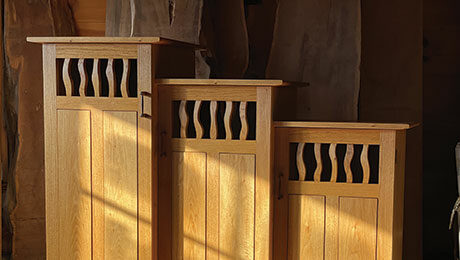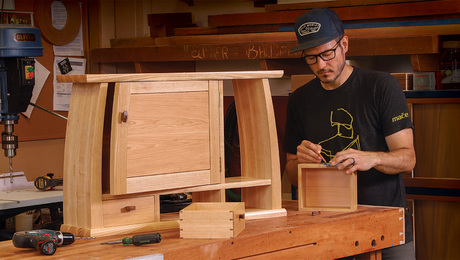
Germán Peraire became a teacher almost as soon as he became a maker. After taking a stab at photography, he realized at 26 that he needed to reinvent himself. Attracted to fine furniture making but finding no appropriate makers or programs nearby, he began immersing himself in the craft through English-language books, magazines, and videos.
When he mastered a skill–dovetails, for example–he began teaching what he knew, first to friends and soon to others in small groups at his shop. Before long he was teaching weekend workshops. He continued making furniture on commission, although the market was tough and the pieces he really wanted to build were the challenging ones that demanded skills he had yet to acquire. “What really takes my fancy,” he says, “is investing 400 or 500 hours in one piece. I wouldn’t be able to sustain myself just selling furniture, but it turns out I have a knack for teaching.”
 |
 |
Peraire now teaches weekend workshops year-round (except January and July) as well as 10- to 14-day intensive classes three or four times a year. Classes are held in the timber-frame shop he built overlooking a wheat field an hour outside his native Barcelona, and students are provided with meals and sleeping bungalows. It’s a successful business and an enjoyable one. “So in a way,” he says, “life has told me, ‘You should be teaching more than building.’” But he won’t stop building. “At core,” he says, “I am an amateur. I remember very well my beginnings and this amazing sense of freedom that you get when you are alone in the workshop putting all of your attention into only one task. So I’ve been always looking for that experience and trying to deepen it as much as I can.”

Tea times two.
Peraire’s slant-front desk and mating wall cabinet in olive ash, white ash, and cherry were built to contain the herbs he likes to collect for tea infusions from the forests near his workshop outside Barcelona. He used modified violin tuning keys as drawer pulls. The bow-front wall cabinet below, also made to house a custom tea set, has a quatrefoil pierced carving in its hard maple door.
File cabinet takes a sublime turn.
Peraire’s freestanding cabinet (below), with a locking tambour door that slides down from the top and rolls up in the base, is derived from a utilitarian file cabinet common in Europe in the 19th century. The originals were typically unadorned, but Peraire and Xènia Garrofé adapted a carved design by Spanish furniture maker Gaspar Homar and asked Beatriz Zuazo to render it in marquetry.
 |
 |
Fine Woodworking Recommended Products

Blum Drawer Front Adjuster Marking Template
This template acts as a “dowel center” for punching a hole to mark where to drill fro clearance holes.
Sign up for eletters today and get the latest techniques and how-to from Fine Woodworking, plus special offers.
